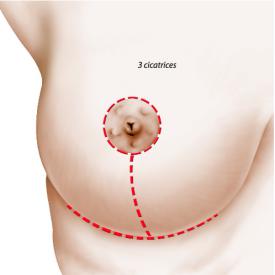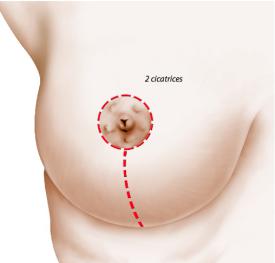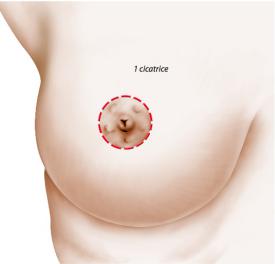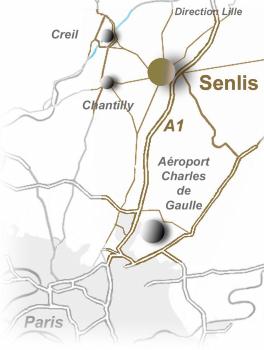AESTHETIC PLASTIC
RECONSTRUCTIVE
SURGERY
SEBASTIEN GARSON M.D
LIPOSTRUCTURE
This fact sheet was developed under the aegis of the French Society of Plastic Reconstructive and Aesthetic Surgery (SOF.CPRE) as an addition to your initial consultation, to try to answer all the questions you can ask yourself if you plan to use surgery baldness. The purpose of this document is to provide you with all the necessary and essential elements of information to help you make your decision with full knowledge of the facts. Also you is it advisable to read with the greatest attention.
• DEFINITION OBJECTIVES AND PRINCIPLES
Breast ptosis is defined by a sagging of the gland and distension of the skin surrounding it. The breast is in too low a position and more frequently "disinhabited" in its upper part.
Ptosis can occur immediately but most often after a significant weight loss or during a breastfeeding pregnancy. It can be isolated: we then speak of pure ptosis. It can also be associated with a certain degree of breast hypertrophy.
Conversely, breast ptosis can be observed in the context of a breast that is too small (breast hypoplasia or hypotrophy).
These aesthetic defects do not justify treatment by the Assurance-Maladie.
The purpose of the surgery is to restore the areola and nipple to their correct position, to refocus and lift the gland and to remove excess skin in order to obtain two harmonious, beautifully curved and lifted breasts.
The operation consists of reshaping the breast by acting on the skin envelope and the glandular tissue. The gland is concentrated and placed in the right position. The skin envelope must then be adapted, which means that excess skin must be removed to ensure a good fit and shape to the new breast. These gestures make it possible to replace the areola and the nipple which were too low situated. The edges of the skin that have been cut are sutured at the end of the operation: these sutures are the cause of the scars.
In case of very significant ptosis, the scar has the shape of an inverted T with three components: periareolar around the areola between the brown and white skin, vertical between the lower pole of the areola and the submammary fold, horizontal hidden in the submammary fold. The length of the horizontal scar is proportional to the size of the ptosis.
More often, in the presence of moderate mammary ptosis, a so-called "vertical" method can be performed which allows the transverse scar in the sub mammary fold to be removed and the scar ransom to be reduced to its periareolar and vertical components.
In some cases of very moderate breast ptosis, it is possible to use a technique that allows correction of the affairment only with a scar around the areola.
Finally, when ptosis is associated with insufficient volume (breast hypoplasia), it may be desirable to put in place, at the same time, a prosthesis to restore breast volume.
satisfactory. In this case, it is usually possible to remove the excess skin around the areola and thus limit the scar to a peri-areolar circle only.
Breast plasty for ptosis can be performed from the end of growth and beyond throughout life.
A subsequent pregnancy is of course possible, as well as breastfeeding, but it is advisable to wait at least six months after the procedure.
The risk of cancer is not increased by this procedure.
• BEFORE THE OPERATION
A routine pre-operative check-up is performed as prescribed.
The anaesthetist will be seen in consultation at the latest 48 hours before the operation.
In addition to the usual pre-operative examinations, it may be useful to check the breast imaging (mammography, ultrasound).
No medication containing aspirin must be taken for 10 days before the operation.
• TYPE OF ANESTHESIA AND CONDITIONS OF INTERVENTION
Type of anesthesia:
This is a classical general anaesthesia, during which
you're sound asleep.
Hospitalization arrangements:
A one- to two-day hospitalization is usually
necessary.
• INTERVENTION
Each surgeon adopts a technique that is specific to him and that he adapts to each case to obtain the best results.
At the end of the operation, a shaping bandage with elastic bands in the shape of a bra is made.
Depending on the surgeon and the importance of the ptosis, the operation can last from one hour and a half to two hours and a half.



AFTER THE INTERVENTION: THE OPERATING SUITES
The after-effects of the operation are generally not very painful, requiring only simple analgesics.
Swelling (oedema) and bruising of the breasts, as well as discomfort when raising the arms are frequently observed.
The first dressing is removed after 24 to 48 hours and replaced by a lighter dressing, making a kind of custom-made elastic bustier.
The patient is discharged 24 to 48 hours after the operation and is seen again in consultation two to three days later.
The patient is then fitted with a bra that provides good support (the size of which will have been assessed at the time of dressing at the clinic before discharge).
It is advisable to wear this bra for about a month, night and day, around the time of the operation.
The stitches, if they are not absorbable, are removed between the eighth and twentieth day after the operation.
Convalescence and work stoppage for 7 to 10 days should be considered.
It is advisable to wait one to two months before resuming sports activities.
• THE RESULT
It can only be judged from one year after the operation: the chest then usually has a harmonious and natural curvature, symmetrical or very close to symmetry. Beyond the local improvement, this operation generally has a favourable impact on weight balance, sports practice, clothing possibilities and psychological state.
It is simply necessary to have the patience to wait the necessary time to attenuate the scars and to observe during this period a good monitoring, at the rate of a consultation approximately every three months for one year.
The operated breast is a breast that remains natural and sensitive, especially to hormonal variations.
• FAULTS OF THE RESULT
These are essentially scars, which are carefully monitored: they often take on a pinkish and swollen appearance during the second and third months after surgery; beyond that, they generally fade gradually to become, over time, hardly visible.
However, they may remain enlarged, white or, on the contrary, brown.
As far as scars are concerned, it is important to know that although they generally fade well over time, they cannot disappear completely. In this respect, one should not
don't forget that if it's the surgeon who does the sutures, the scar is the patient's.
Sometimes asymmetry of the breasts may persist, whether in terms of volume, height, size or orientation of the areolas.
In all cases, a secondary surgical correction can be made, but it is advisable to wait at least a year or two.
• POSSIBLE COMPLICATIONS
A breast plastic surgery for ptosis, although performed for essentially aesthetic reasons, is nonetheless a real surgical procedure, which implies the risks associated with any medical act, however minimal it may be.
The postoperative consequences are generally simple after a breast surgery. However, complications may occur, some of a general nature, inherent to any surgical procedure, others more specific to breast surgery.
A distinction must be made between complications related to anaesthesia and those related to the surgical procedure.
As far as anaesthesia is concerned, during the consultation, the anaesthetist will himself inform the patient of the anaesthetic risks. It is important to know that anaesthesia induces in the organism some reactions
sometimes unpredictable, and more or less easy to control: the fact of having recourse to a perfectly competent Anaesthetist, practising in a truly surgical context, means that the risks incurred have become statistically almost negligible.
Indeed, it is important to know that techniques, anaesthetic products and monitoring methods have made huge progress over the last twenty years, offering optimal safety, especially when the operation is performed outside the emergency room and in a healthy person.
As far as the surgical procedure is concerned: by choosing a qualified and competent Plastic Surgeon, trained for this type of intervention, you limit these risks as much as possible, without however completely eliminating them. Fortunately, real complications are rare following a breast plastic surgery for ptosis performed properly.
In practice, the vast majority of procedures are trouble-free and patients are fully satisfied with the results. However, despite their low frequency, you should still be aware of the possible complications:
The occurrence of an infection requires antibiotic treatment and sometimes surgical drainage.
A haematoma may require evacuation.
Necrosis of the skin, in fact rarely observed with modern techniques, may be responsible for delayed healing. Alterations in sensitivity, particularly of the nipple, may be observed, but normal sensitivity usually reappears within 6 to 18 months.
Above all, the evolution of the scars can be unfavourable with the occurrence of hypertrophic scars, even keloid scars, of unpredictable appearance and evolution, which can compromise the aesthetic aspect of the result and require specific local treatments that are often long..
In total there should not overstate the risks, but just be aware that surgery, even seemingly simple, still a small share of hazards. The use of a qualified Plastic Surgeon ensures that it has the training and knowledge required to avoid these complications, or effectively treat if jurisdiction.
These are the pieces of information that we wanted to bring you in addition to the consultation. We recommend that you keep this document, read it again after the consultation and reflect "a clear head." This reflection may raise new questions for which you wait for additional information. We are available to talk during the next consultation, or by phone, or even on the day of surgery when we meet in any way before anesthesia.
CONTACT
Contact Us
Phone : + 33344282959
Address:
7 impasse de la Passerelle 60300 SENLIS
France

Copyright SELARL Dr Garson Pages d'information- Crédits photos : Dr Garson / Libre de droits - Mentions légales
Ce site utilise des cookies à des fins statistiques - Pour en savoir plus, cliquez ICI.
SITE RÉALISÉ AVEC WEBACAPPELLA RESPONSIVE